Desiring Machines
(2002)
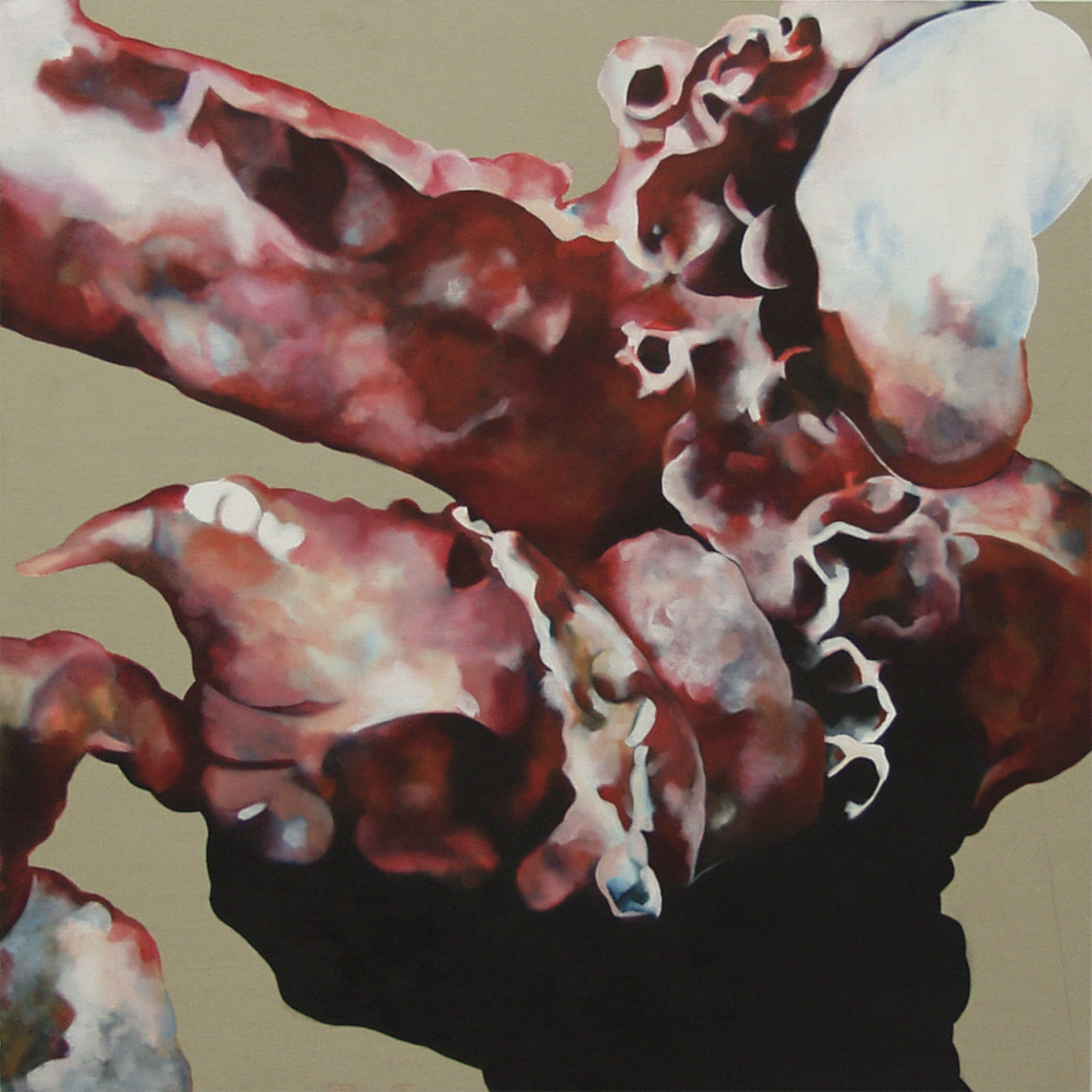

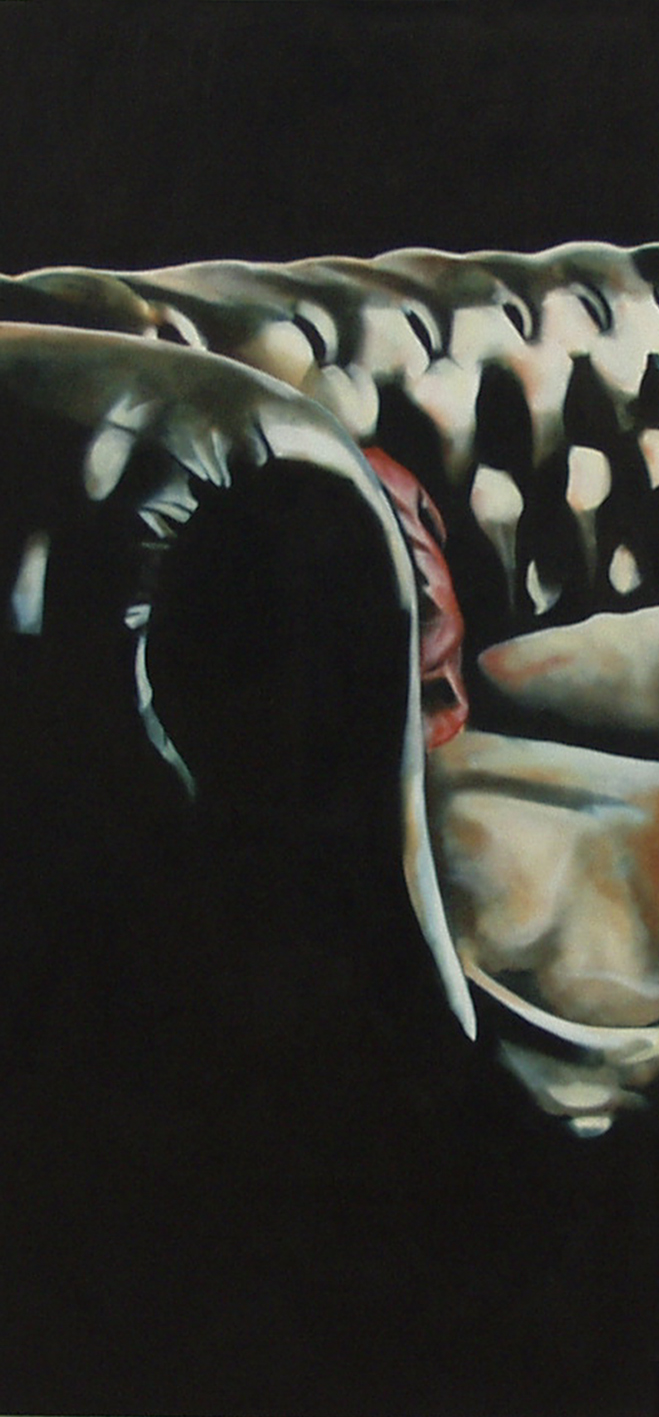
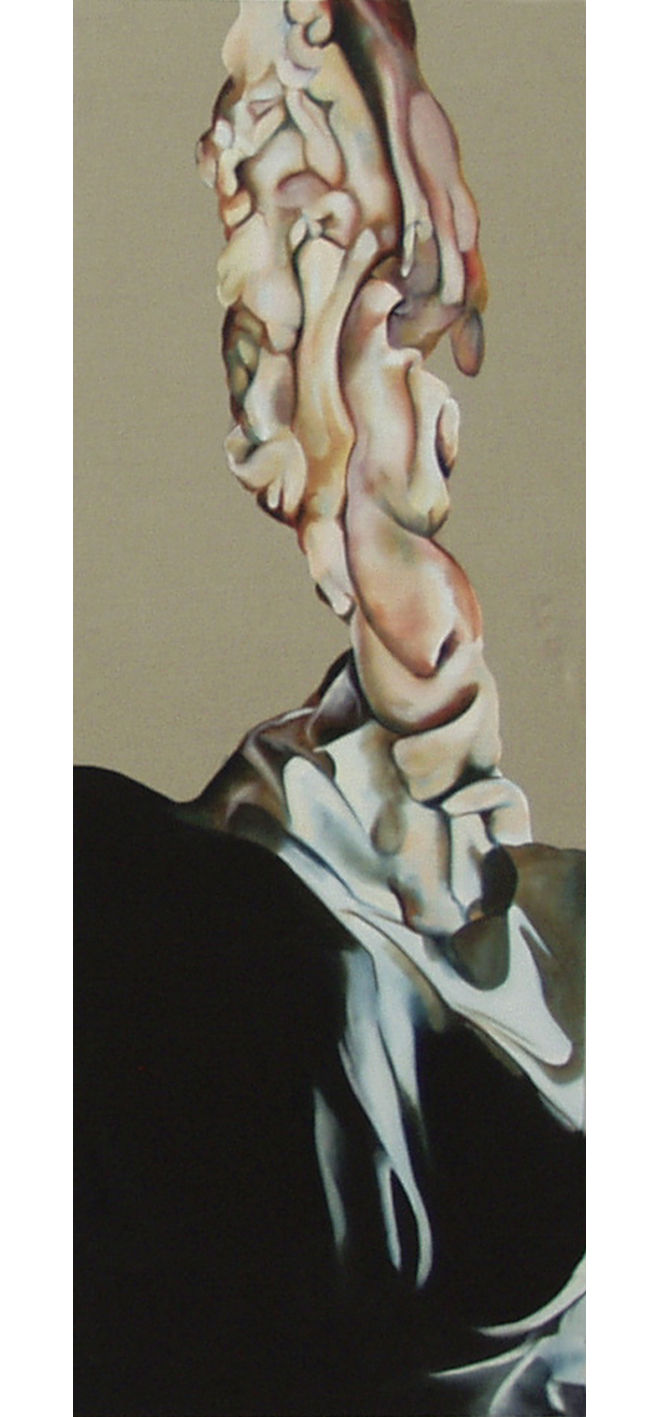
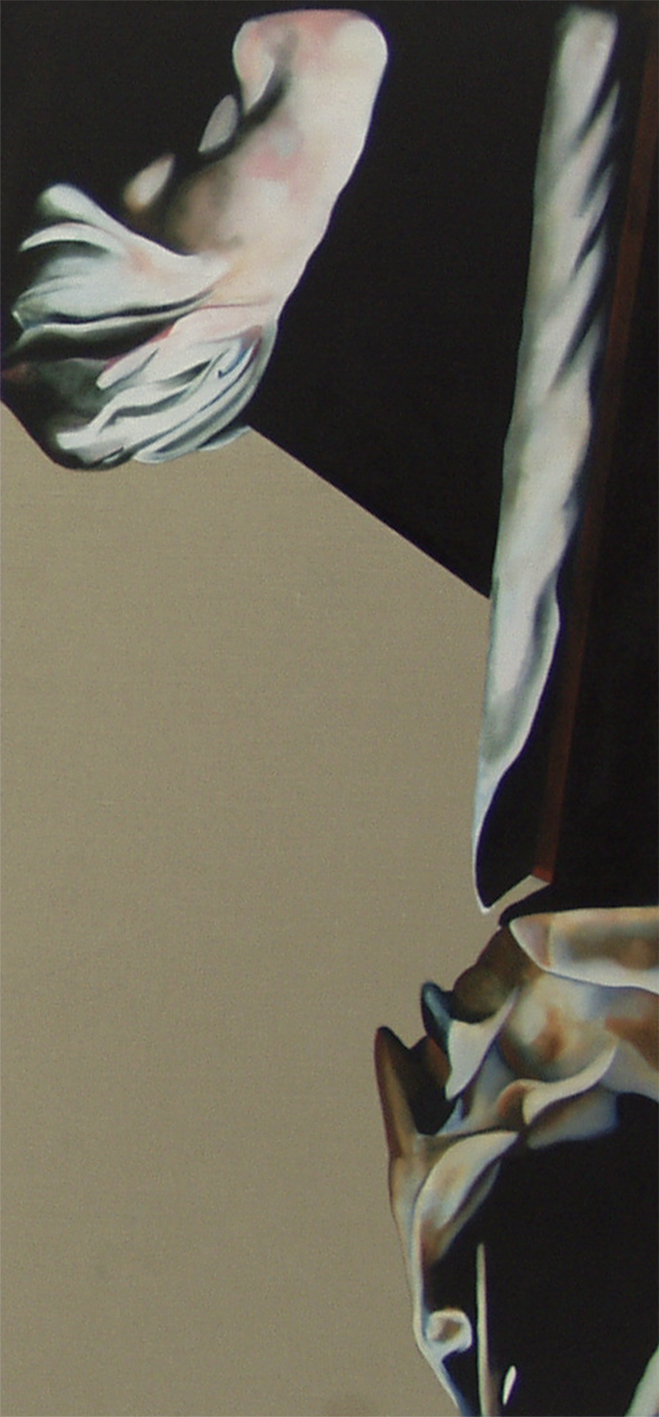

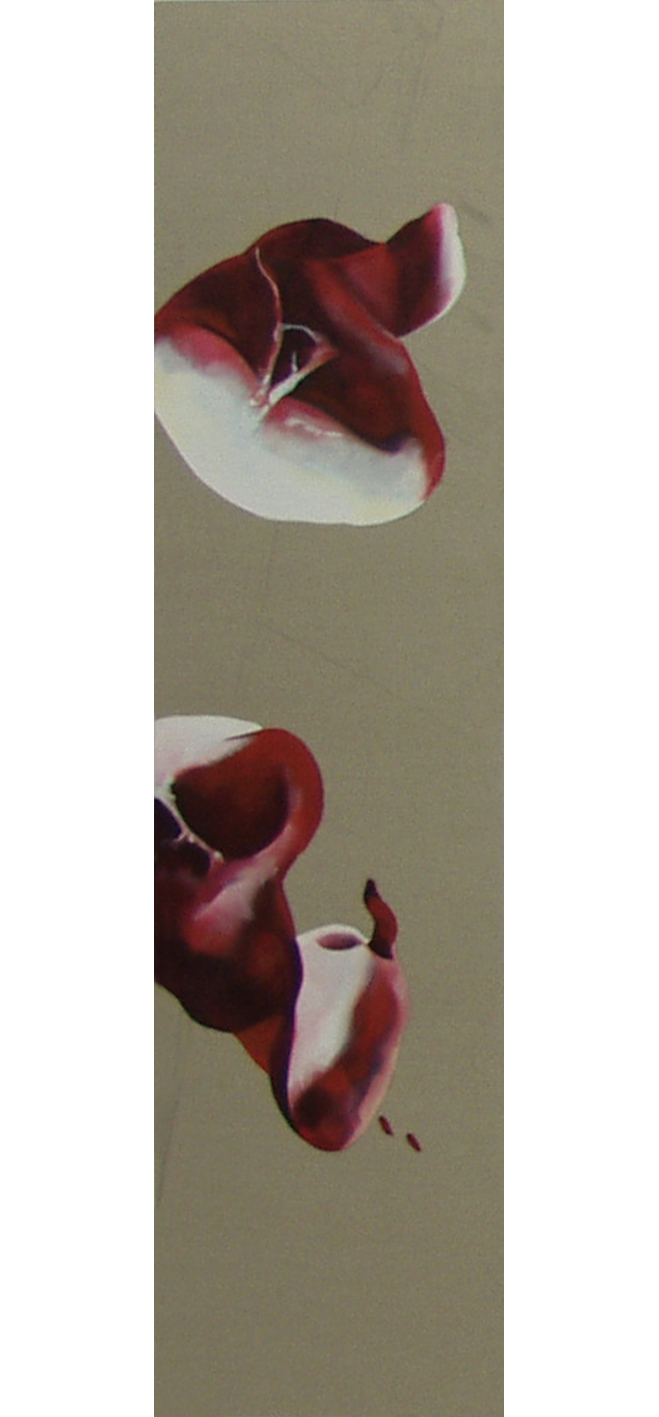
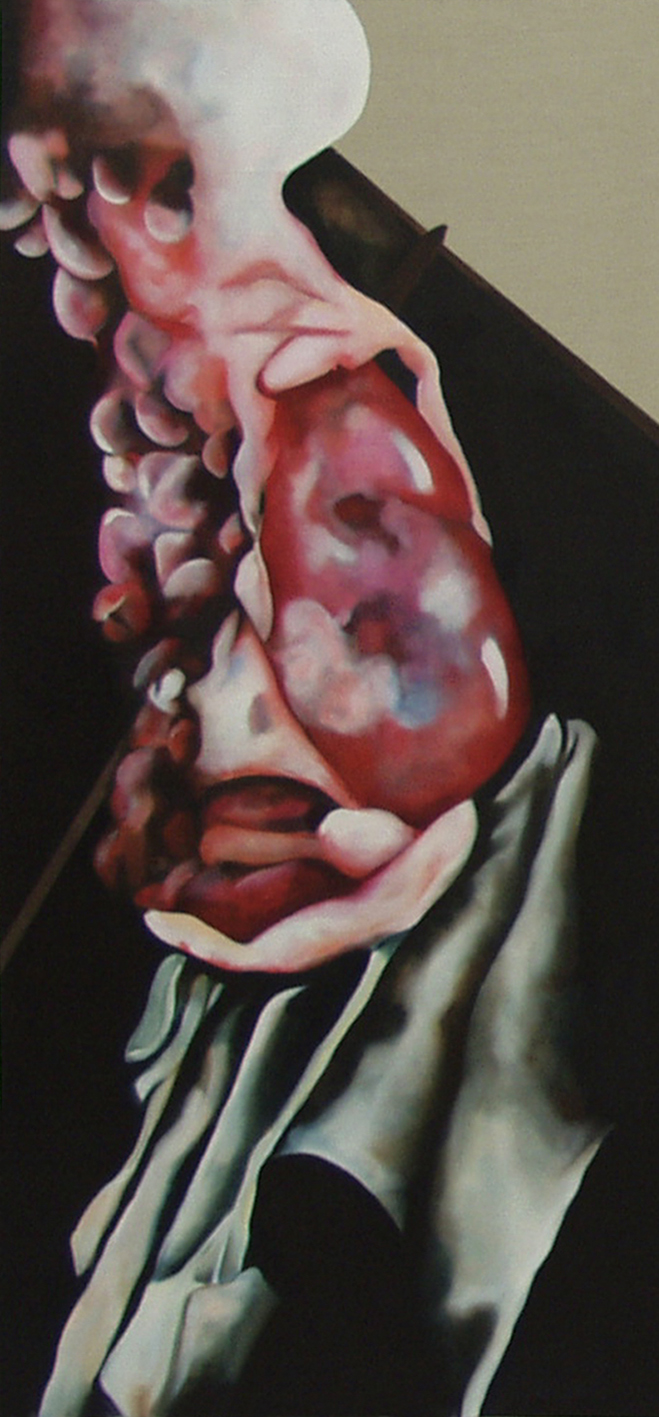
Desiring Machines (2002)
Each panel 1’ to 4’ wide and 4’ high
Oil on linen
Installation

In the early 2000s I was really interested in the relationship between bodies and spaces. I had just read Scott Mcloud’s Understanding Comics and I wanted to create an installation that allowed the viewer to move through a narrative as they moved through the space of the installation.
In Understanding Comics, MCloud talks about the depiction of time in comic panels; the way in which the grammar of comics panelling allows cartoonist to depict time passing within a narrative. I was also reading about and looking at still life painting which has a different relationship to time. The Nature Morte painting is a response to the constant presence of death and the possibility of decay. A still life is a full stop and an invitation to move into the space of the painting, a comic panel is a movement forwards into the narrative. What I ended up with was this set of paintings which I called ‘Desiring Machines’, (I had also been reading Deleuze) which were supposed to be a reflection on the body as a container and its relationship to the skin. These images were hugely influenced by the book Bodies: Exploring Fluid Boundaries by Robyn Longhurst which I still reread quite regularly. Longhurst writes really interestingly about bodies and contamination in domestic and public spaces, particularly the ‘circuits of fluid’ that she suggests are present in bathrooms. These are all themes I am still interested in now and probably will be continuing to think about forever; the relationship of the organic matter of our bodies to the inorganic matter of the houses that contain them. Or to put it another way, the aliveness of our bodies contrasted with the deadness of the spaces that contain them particularly, where that liveness and that deadness begin and end and if you might use drawing and painting to diagram those transitions.
I think subconsciously maybe this piece of work was also an attempt to reclaim a certain way of thinking about the body in painting from the way it was being presented to me at the time. On my undergraduate degree, painting was a very masculine, heteronormative space. I was really interested in Francis Bacon and although these pictures owe a lot to his work, I was really consciously not trying to do what he was doing. I wanted stillness and distance as opposed to violence and immediacy. I was on a very macho painting course and I think a lot of what I was doing with this work was reaction against the surroundings which I found myself in.
I've always been interested in awkward flat or bad element in pictures. I think they give these moments give pictures a tension which makes them more powerful and interesting (to me at least). At the time that I was working on these paintings, a visiting lecturer at the university I was studying at said that my paintings often gave way to stupid passages. It was meant as a criticism and at the time I found it fairly devastating, but I think a lot of my work since then has been about cultivating these moments of stupidity and failure in my work.
The narrative within these paintings is really loose, probably non-existent actually. I think I was concerned with creating a plot adjacent sort of rhythm that the viewer might experience they walked past them. They're more like a series of encounters with entities than a story. At the time that I made these paintings, I was still struggling to think about the way that I wanted to depict bodies (still struggling with that now) and I do not regard them as particularly successful. They did set the stage for almost all of the rest of my work though and so I am very fond of them.

Desiring Machine (2001)
4’ x 5’
Oil on linen